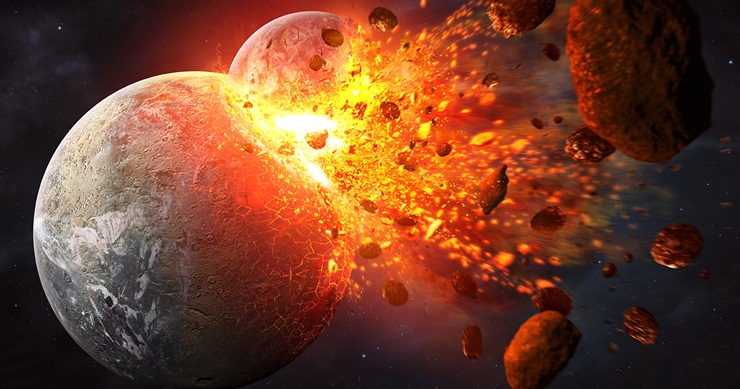An ancient planet named Theia collided with Earth around 4.5 billion years ago, leaving significant amounts of its iron-rich material embedded in our planet. This material lies beneath Africa and the Pacific Ocean in continent-sized deposits. This collision is the most widely accepted theory for the moon’s origin, where the energy from the impact would have melted Earth’s surface and ejected material into orbit, which eventually cooled and formed the moon.
Clues of this ancient collision include the Earth-moon system’s high angular momentum and the moon’s lack of volatile compounds. While evidence of Theia’s existence had been elusive, a new study led by Qian Yuan from the California Institute of Technology provides a simulation of how Earth could have absorbed Theia and left behind the remnants we see today.
Convection models from the study suggest that Theia’s material, in the form of large blobs tens of kilometers in size, would have sunk and accumulated in Earth’s lower mantle, now making up about 2 percent of Earth’s mass. These blobs, due to their unusual density, fell and formed large masses without mixing into the surrounding material, similar to wax blobs in a lava lamp. This study is the first to seriously consider the connection between these high-density blobs and Theia, according to planetary scientist Robin Canup.
The exact timing of Theia’s collision with Earth is debated, with the most precise estimates suggesting it happened when Earth was about 100 million years old. While this theory is dominant, some scientists propose alternative origins for the moon, such as it forming from the same gas and dust cloud as the early solar system or being captured by Earth’s gravity.
Key Takeaways:
- An ancient planet named Theia collided with Earth around 4.5 billion years ago, contributing a substantial amount of iron-rich material to Earth’s composition.
- Researchers have used seismic wave studies to locate continent-sized deposits of this material from Theia beneath Africa and the Pacific Ocean.
- Convection models suggest Theia’s remnants, which are denser than Earth’s original mantle, sank and accumulated in Earth’s lower mantle, forming large tracts that persist today.
“Earth’s Collision With an Ancient Planet As dramatic as it may sound, our collision with a wayward, Mars-sized planet is the best-accepted theory for the origin of the moon.”
More details: here


Leave a Reply